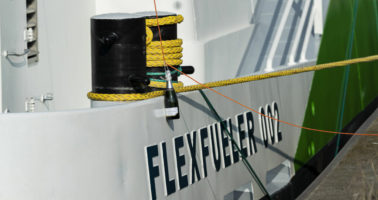March 25, 2021
During a webinar to celebrate the launch of Titan LNG's Flexfueler002 in the port of Antwerp, Audenaerdt said that many of the same questions related to LNG sourcing have been raised when conducting hydrogen hazard analyzes.
Much of the work done to develop safe LNG fueling operations at the Port of Antwerp can be applied to hydrogen, says the port's technical director,
"The answers are sometimes a little bit different, or the mitigation measures that need to be taken are sometimes a little bit different because the characteristics of the substance are a little bit different, but there are also a lot of things that can be reused. So the development [hydrogen] is a little easier""
Celine Audenaerdt, Technical Director of the Port of Antwerp

Audenaerdt also noted that, when it comes to legislation, the authorities' understanding of LNG and their knowledge of the challenges it poses "makes the introduction of hydrogen a little easier."
In the webinar, Audenaerdt explained how the Port of Antwerp has been prepared to carry out LNG fueling operations safely. The terminals have been prepared through workshops and training, so they know the safe handling procedures for LNG and are aware of the risks that LNG bunkering entails.
Audenaerdt also highlighted that the Port of Antwerp has set a CO2 emission reduction target of 45% by 2030.
Antwerp is the fifth world port for the supply of fuel.
The port of Antwerp has an important role to play in the transition to "green" fuels. The port aspires to become a multi-fuel port in 2025, a port where, in addition to conventional fuels, alternative and more sustainable fuels can be available.
Actions in this area:
- Inclusion of methanol, hydrogen and electrical energy in the fuel supply market
- Expand the supply of LNG
- Develop conventional bunkering into a full-fledged port service with the introduction of a robust licensing system and a digitalization pathway.

